Location and Access
 This site comprises an SSSI, consisting of mature oak woodland beside the quiet minor road, B7044, between Ballantrae and Colmonell(turn north-eastwards off the A77 at the southern outskirts of Ballantrae). Alternatively, from Girvan, turn off the A77 just north of Ballantrae on to the B734, then right at the B7044.
This site comprises an SSSI, consisting of mature oak woodland beside the quiet minor road, B7044, between Ballantrae and Colmonell(turn north-eastwards off the A77 at the southern outskirts of Ballantrae). Alternatively, from Girvan, turn off the A77 just north of Ballantrae on to the B734, then right at the B7044. 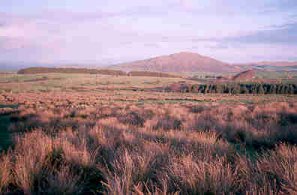
Park by the roadside with consideration for other users and walk the section along the hillside. Good birding can be enjoyed all along this road, but the wooded section at NX 113 848, about 4km from Ballantrae, above the river and along the slopes of Knockdolian Hill is especially rewarding. The view south-eastwards towards Glen Tig and the slopes of Beneraird not only provides an attractive scene, but is well worth scanning for soaring raptors. In the foreground, the River Stinchar should not be neglected either.
The site is a longish walk from the nearest bus route but an approach by cycle up the B7044 from Ballantrae has appeal and would enable Ballantrae Shore and Knockdolian to be explored together.
This is a busy country road with no surfaced lay-bys or safe refuges for wheelchair users to avoid passing traffic. Opportunities exist to watch and listen from vehicle.
![]() Easy ride along B7044, all good for birds.
Easy ride along B7044, all good for birds.
Birds
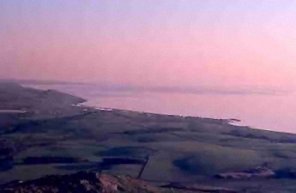 The real value of Knockdolian lies in its breeding bird community. Mature oak woodland is a scarce commodity in Ayrshire and the range of species breeding here is typical of such habitats. Early spring migrants such as Chiffchaff and Willow Warbler often occur here well ahead of their arrival elsewhere in the county. However, May is probably the best time to hear the songs of breeding species like Tree Pipit, Redstart, Wood Warbler and Pied Flycatcher. The river valley also holds wealth of birdlife with both Red-breasted Merganser and Goosander occasionally nesting alongside regulars such as Common Sandpiper, Grey Wagtail, Dipper and sometimes Kingfisher. The following species could be expected depending on the time of year: Grey Heron, Mallard, Buzzard, Sparrowhawk, Kestrel Pheasant, Oystercatcher, Common Sandpiper, Woodpigeon, Cuckoo, Great Spotted Woodpecker, Skylark, Meadow Pipit, Tree Pipit, Sand Martin, Swallow, House Martin, Wren, Dunnock, Robin, Redstart, Redwing, Blackbird, Fieldfare, Song Thrush, Mistle Thrush, Whitethroat, Garden Warbler, Blackcap, Wood Warbler,Chiffchaff, Willow Warbler, Spotted Flycatcher, Pied Flycatcher, Long-tailed Tit, Coal Tit, Blue Tit, Great Tit, Treecreeper, Jay, Jackdaw, Rook, Carrion Crow, Raven, Starling, Chaffinch, Greenfinch Goldfinch, Siskin, Linnet, Bullfinch, Yellowhammer. Scarcer species such as Osprey, Green Woodpecker and Waxwing have also occurred.
The real value of Knockdolian lies in its breeding bird community. Mature oak woodland is a scarce commodity in Ayrshire and the range of species breeding here is typical of such habitats. Early spring migrants such as Chiffchaff and Willow Warbler often occur here well ahead of their arrival elsewhere in the county. However, May is probably the best time to hear the songs of breeding species like Tree Pipit, Redstart, Wood Warbler and Pied Flycatcher. The river valley also holds wealth of birdlife with both Red-breasted Merganser and Goosander occasionally nesting alongside regulars such as Common Sandpiper, Grey Wagtail, Dipper and sometimes Kingfisher. The following species could be expected depending on the time of year: Grey Heron, Mallard, Buzzard, Sparrowhawk, Kestrel Pheasant, Oystercatcher, Common Sandpiper, Woodpigeon, Cuckoo, Great Spotted Woodpecker, Skylark, Meadow Pipit, Tree Pipit, Sand Martin, Swallow, House Martin, Wren, Dunnock, Robin, Redstart, Redwing, Blackbird, Fieldfare, Song Thrush, Mistle Thrush, Whitethroat, Garden Warbler, Blackcap, Wood Warbler,Chiffchaff, Willow Warbler, Spotted Flycatcher, Pied Flycatcher, Long-tailed Tit, Coal Tit, Blue Tit, Great Tit, Treecreeper, Jay, Jackdaw, Rook, Carrion Crow, Raven, Starling, Chaffinch, Greenfinch Goldfinch, Siskin, Linnet, Bullfinch, Yellowhammer. Scarcer species such as Osprey, Green Woodpecker and Waxwing have also occurred.
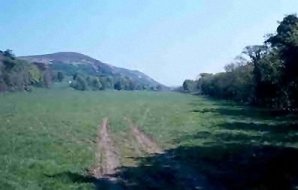
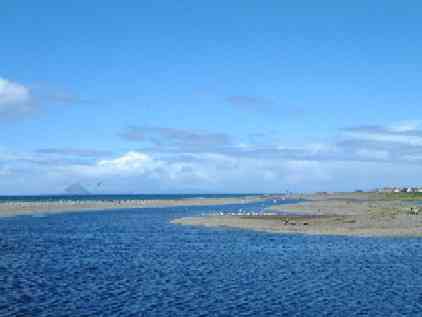
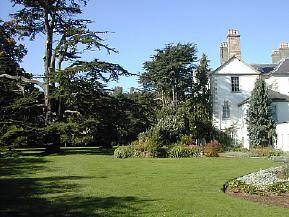
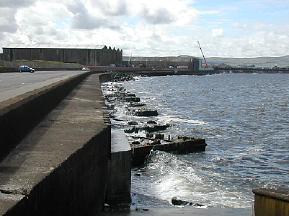
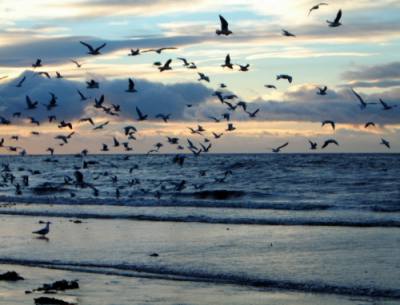
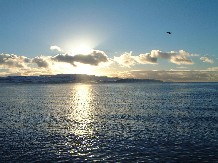
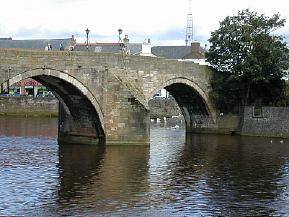 Glaucous and Iceland Gulls can be found in the harbour, though for a better view go into Ayr to the Auld Brig area and scan the multitude of gulls that gather there. Good, close views of these gulls can occasionally be had. The Auld Brig area also has large numbers of swan, mostly Mute (80+) but occasionally there are Whoopers and the odd goose. There is parking right beside the bridge though this tends to fill up quite quickly, alternatively use the Asda car park.
Glaucous and Iceland Gulls can be found in the harbour, though for a better view go into Ayr to the Auld Brig area and scan the multitude of gulls that gather there. Good, close views of these gulls can occasionally be had. The Auld Brig area also has large numbers of swan, mostly Mute (80+) but occasionally there are Whoopers and the odd goose. There is parking right beside the bridge though this tends to fill up quite quickly, alternatively use the Asda car park.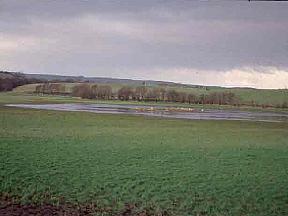
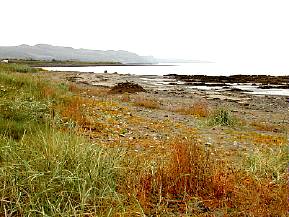 The only recommended safe access is at Dipple (NS 201 024). Approaching from the north, and opposite Kelco alginate factory, an entrance on the left leads to a section of the old coast road, with a number of cottages and a telephone box. A bus stop lay-by lies immediately beyond. Park on the old road with consideration for the occupants of the cottages and cross the A77 on foot with care. 100 metres south along the factory fence line, a track leads down to the shore at the mouth Lady Burn from where the shoreline can be explored. If coming from the south, go past the site by 1km rather than risk a right turn across the traffic at this poor visibility section, and reverse your route from Dowhill Farm on your right, into which the right turn has been made safer.
The only recommended safe access is at Dipple (NS 201 024). Approaching from the north, and opposite Kelco alginate factory, an entrance on the left leads to a section of the old coast road, with a number of cottages and a telephone box. A bus stop lay-by lies immediately beyond. Park on the old road with consideration for the occupants of the cottages and cross the A77 on foot with care. 100 metres south along the factory fence line, a track leads down to the shore at the mouth Lady Burn from where the shoreline can be explored. If coming from the south, go past the site by 1km rather than risk a right turn across the traffic at this poor visibility section, and reverse your route from Dowhill Farm on your right, into which the right turn has been made safer.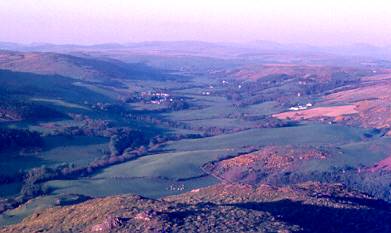
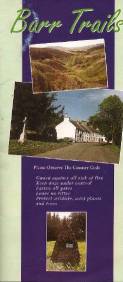 Nearly 5km of paths have been joined together to form circular routes by riverside, forest and open hill, very typical of southern, inland Ayrshire. Access is thanks to the goodwill and generosity of the landowners: Forest Enterprise and W A F Cuninghame. Of the 4 way marked routes, The Devil’s Trail, coded purple and some 6.5 km long has the greatest diversity of habitat for birds. To reach the start, turn inland from the coastal A77 just north of Girvan and follow B734 up into the hills to Barr. The road winds over typical grass and moorland, good birding for the passengers, but the driver will need concentration. In Barr, where B734 goes sharp left at the Inn, continue straight on along a rough single track road for 1 km, then left at a fork to the forest car park and official start of the trails.
Nearly 5km of paths have been joined together to form circular routes by riverside, forest and open hill, very typical of southern, inland Ayrshire. Access is thanks to the goodwill and generosity of the landowners: Forest Enterprise and W A F Cuninghame. Of the 4 way marked routes, The Devil’s Trail, coded purple and some 6.5 km long has the greatest diversity of habitat for birds. To reach the start, turn inland from the coastal A77 just north of Girvan and follow B734 up into the hills to Barr. The road winds over typical grass and moorland, good birding for the passengers, but the driver will need concentration. In Barr, where B734 goes sharp left at the Inn, continue straight on along a rough single track road for 1 km, then left at a fork to the forest car park and official start of the trails.